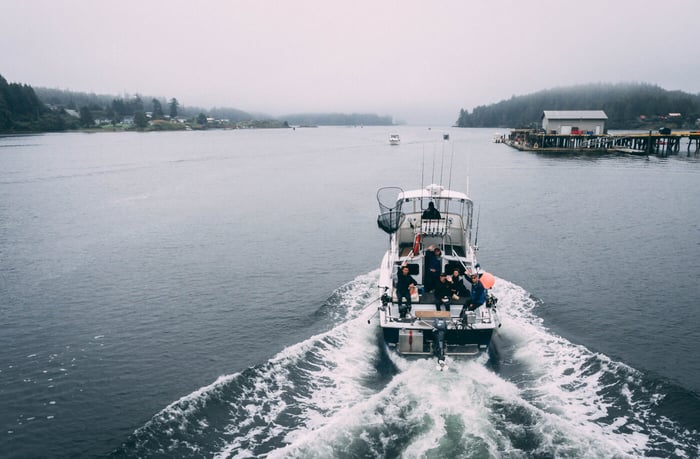When it comes to canned seafood, tuna is ubiquitous. Many of our first canned seafood memories begin with tuna. It can be found seemingly everywhere—diners, gas stations, specialty grocers, conventional grocers, and in the pantry of many homes across the globe. Canned tuna’s abundance is no accident. Tuna is delicious, nutritious, and when sourced responsibly can be a truly sustainable protein source. Yet what often goes forgotten when polishing off that tuna sandwich from the local deli, is the impact that tuna has on our oceans and waterways.
Tuna are the lions of the sea. Ranging anywhere from four pounds to upwards of 1,500 pounds, tuna maintains order in our oceans. With very few predators, tuna thrive at the top of the food chain on a seafood lover's diet, throwing back healthy portions of mackerel, herring, sardines, squid, crustaceans, and much more. Like any wild ecosystem, when too many predators are plucked from the top of the food chain, balance is lost. 
So is it okay to eat tuna?
Absolutely, but stay informed. Expecting all consumers to stay up to date on the ever-changing wild populations of marine animals is unrealistic, but seeking out trustworthy brands that have been certified by third-party sources like the Marine Stewardship Council (MSC) has never been easier. A rule of thumb, if a producer isn’t willing to share and celebrate where they are sourcing from, dig deeper and proceed with caution.
For more information on what to look for when buying tuna, take a look at the post about why Tuna Shouldn’t Cost $2.
Okay, so what is all this “eat like a tuna” talk about?
A balanced diet requires diversity, and like most healthy, wild species, tuna have a diversified diet. Consuming a wide variety of small fish, squid, and crustaceans (lobster, shrimp, crabs, etc.) is what fuels tuna to grow into the healthy stallions of the ocean—and it’s something that we can learn from.
If we diversify our palates, we can continue enjoying the fish we love, including tuna. Our food systems are prone to creating markets for very specific food sources and overcommitting to those markets. When fisheries began understanding that North Americans love to eat tuna, salmon, and shrimp, the investment into those species became very robust—not dissimilar to how land-based agriculture heavily invested in beef, pork, and chicken.
When one species is overfished, it tends to create an abundance of other species. When tuna are overfished, the population of their prey exceeds natural levels, and there is an abundance of species like herring, sardines, and mackerel. If demand increases for the prey of tuna while the demand for tuna stays level, we have an opportunity for sustained wild stocks and food for the future. In short, we need to consume a wider variety of seafood.
So why does Scout even produce tuna if we need more variety?
Producing tuna was never the plan. Scout initially launched with a lineup of lobster, mussels, and trout—sharing a taste of Canada with less market exposure. It was quickly discovered that there is a lot of skepticism in North America when it comes to seafood consumption—something that takes strategy to unravel. So rather than exclusively connecting with adventurous seafood-lovers, Scout wanted to introduce tuna-only-eaters to explore what else our oceans and waterways have to offer. Tuna became the gateway species.
It is also about providing a much-needed upgrade. If tuna is going to be consumed in large numbers, consumers deserve to consume a product that is responsibly sourced and produced in North America, free of nefarious sourcing or labor practices.
Scout is invested in being an accessible medium for welcoming the bounties of our oceans and waterways into your kitchens or on your adventures. Yes, we want you to eat tuna. It’s why we source sashimi-grade tuna, cure it in sea salt and sugar, and smoke it with Canadian hardwood. It’s why we preserve our tuna with organic olive oil and garden herb pesto. Yet we want you to explore what else we have to offer, and what our competitors have to offer. Whether it be sustainably farmed rope-grown mussels from Prince Edward Island, Atlantic Canadian Lobster from Canada’s east coast, or even sugar kelp harvested in Maine, there’s more to find out at sea. By exploring what our oceans have to offer, we’re creating new markets and promoting biodiversity in our oceans and waterways.
Take the tuna’s lesson, and eat like a tuna.


